Project Engagement (v2): Life, History, and Multiverse
Project Engagement and Themes of Practice
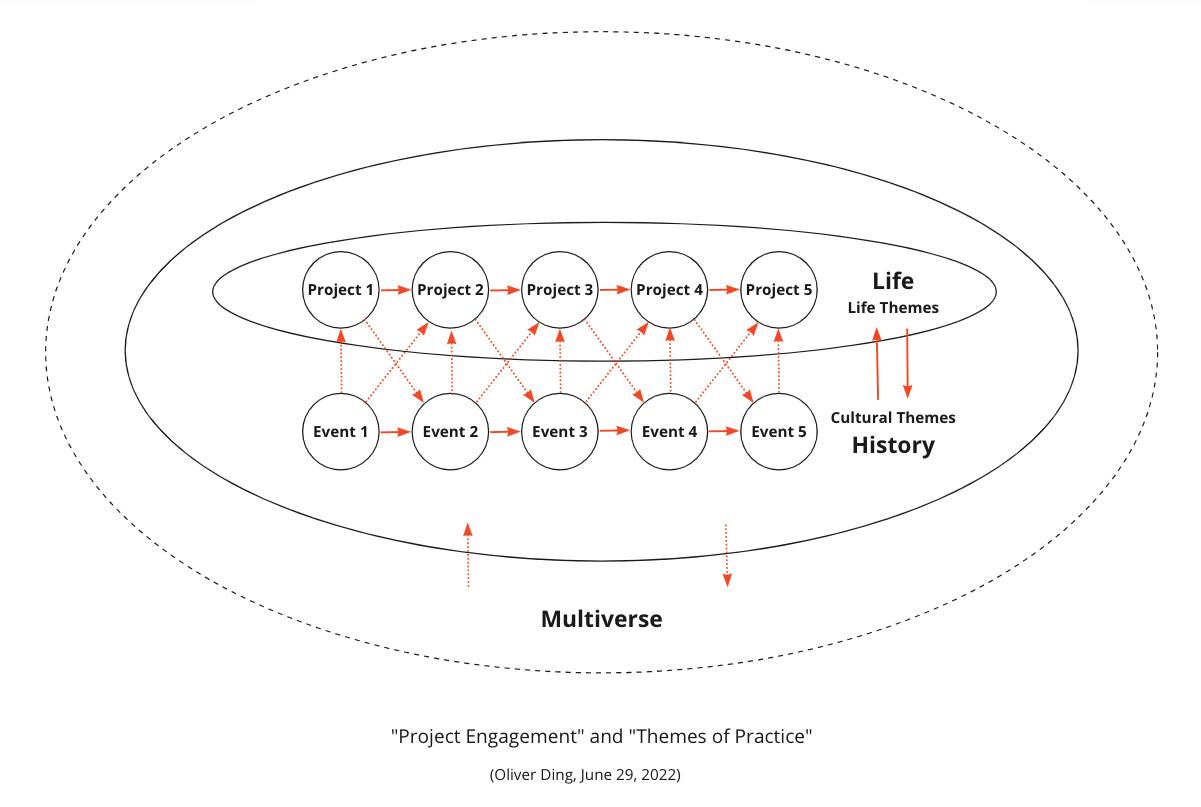
The above diagram is about the idea of connecting "Project Engagement" and "Themes of Practice". It is expanded from the Event [Enterprise(Project)] Framework, see the diagram below.

The pair of concepts of "Event - Project" is part of the Project Engagement approach while the pair of concepts of "Life Themes - Cultural Themes" is part of the "Themes of Practice" framework. The new diagram is also inspired by the notion of "Activity as Project Engagement".
This article aims to offer more background for the above new diagram.
Contents
1. Events and Projects
2. Projectivity and Cultural Projection
3. Life as a Chain of Projects
4. History as a Chain of Events
5. Concepts as Themes of Practice
6. Activity as Project Engagement
7. The Life-History Topology
8. Engagement as Moving between Thematic Spaces
1. Events and Projects
On Nov 29, 2020, I published the Life as Activity (v0.3) Framework and discussed the pair of concepts of “Events — Projects”. Though the framework has been upgraded to v2.0 and its newest version the Life as Project approach, I still keep my thoughts about “Events — Projects”. This section is adopted from the original v0.3 article.
My approach uses “events” and “projects” to present social context and individual biography. The difference between “events” and “projects” is individual involvement. If the person directly gets involved in an activity — it means she is the subject of the activity or part of the community of the activity — then the activity is a project of her biography. If the person doesn’t directly get involved in the activity, then the activity is an event of her biography.

Let’s use the biography of Yrjö Engeström who is a leading Activity Theorist as an example. According to Annalisa Sannino, there are four main phases in Engeström’s development as an activity theorist, “(1) the European student movement of the 1960s and the discovery of activity theory; (2) the study of instruction and the turn from school learning to workplace learning; (3) developmental work research and the theory of expansive learning; and (4) the formation of activity-theoretical communities aimed at changing societal practices.” (2009, p.11) We can use the above diagram to represent Engeström’s biography.
Phase 1
- Event 1: the European student movement of the 1960s.
- Project 1: Engeström wrote his first book (Engeström,1970), Education in Class Society: Introduction to the Educational Problems of Capitalism (in Finnish).
- Event 2: Leontiev’s Problems of the Development of the Mind, published in East Germany in 1973 (Leontjew,1973), and Davydov’s Types of Generalizations in Instruction, which was available in East Germany in 1977 (Dawydow, 1977).
- Project 2: Engeström discovered Activity Theory by reading Davydov’s book and II’enkov’s essay on the dialectics of the abstract and the concrete.
- Project 3: Engeström adopted Activity Theory for his thesis, The Imagination and Behavior of School Students Analyzed from the Viewpoint of Education for Peace (in Finnish) in 1979. This empirical study documents the work of nearly 2,000 students who wrote essays on war and violence.
Phase 2
- Project 1: Engeström attempted to change school instruction by bringing Davydov’s ideas to politically and pedagogically radical Finnish teachers. He published a chapter in the 1984 book Learning and Teaching on a Scientific Basis.
- Project 2: Engeström started paying attention to workplace learning and human resource development in organizations. His first work-related study (1984) was concerned with janitorial cleaning, which was considered to be the occupation with the lowest prestige in Finland. The main motivation for studying the work of cleaners was to demonstrate that this work is creative and has an intellectual basis and to show the possibilities of development.
Phase 3
- Project 1: From 1986 to 1989, Engeström led a study with the primary health care practitioners and patients of the city of Espoo, where patients were facing excessive waiting times before receiving health care and a lack of continuity of care.
- Project 2: Engeström adopted Davydov (1990)’s “learning activity” to investigate/implement radical change at work.
- Project 3: Engeström developed the triangular model of activity systems and the theory of expansive learning and published Learning by Expanding (1987).
Phase 4
- Event 1: Michael Cole directed the Laboratory of Comparative Human Cognition (LCHC) at the University of California, San Diego.
- Project 1: Engeström was invited to work at LCHC.
- Project 2: Engeström initiated communities for adopting activity theory for changing societal practices in Finland.
- Project 3: Inspired by the LCHC, Engeström founded the Center for Activity Theory and Development Work Research at the University of Helsinki.
- Event 2: Georg Rückriem worked on the translations of Leont’ev’s works in Germany.
- Project 4: Engeström suggested the idea of a conference in which scholars within Germany and elsewhere could gather to discuss ways of influencing human practices on the basis of activity theory. Subsequently, Rückriem started organizing the first conference of the International Society for Cultural Research and Activity Theory (ISCRAT), which took place in 1986.
- Event 3: LCHC published a Quarterly Newsletter titled Mind, Culture, and Activity.
- Project 5: Engeström suggested the creation of the journal Mind, Culture, and Activity, which was originally published as the Quarterly Newsletter of LCHC.
- Event 4: In 1995, Finland was struggling to overcome an economic recession, as were many other countries. The problems of the Finnish economy, however, were also connected with the collapse of the Soviet Union, which had been Finland’s main trading partner. Companies were under economic pressure and needed to find short-term solutions to the crisis.
- Project 6: Developmental work research was formulated in terms of a long developmental cycle of interventionist work lasting 3 to 5 years (Engeström & Engeström,1986). Companies in these years could not afford to engage in this kind of transformative venture. The intervention methodology of the Change Laboratory, as compressed cycles of transformation within the broader frame of developmental work research, was elaborated to meet the needs of these institutions.
- Event 5: The Center for Activity Theory and Development Work Research inspired the emergence of similar institutions, such as the Centre for Sociocultural and Activity Theory Research at the University of Bath in the United Kingdom, the Centre for Sociocultural and Activity Theory Research at the University of Oxford in the United Kingdom, and the Center for Human Activity Theory at the University of Kansai in Osaka, Japan.
The above example is just for showing the concepts of “events”, “projects”, and “concepts” within our approach.
Since Activity Theory has the key concept of Object which is a sense-maker of the theory. So, I think we can assign similar sense-makers to Project and Event. For example, I think the primary sense-maker of a Project can be Identity and the primary sense-maker of an Event can be Theme.

The above diagram is a possible way to conceptualize the relationship between event, project, and activity within the Life-as-Activity approach. As a core concept of the approach, Project refers to both events and activities and it shares some aspects with them. In other words, Project’s primary sense-maker is Identity and its secondary sense-makers are theme and object. Thus, we can use theme, identity, and object as sense-makers of the Life-as-Activity approach.
Furthermore, for the Life-as-Activity approach, I think we can consider the Event as Environment while the Activity as the System and consider Project as a switch between an event (environment) and an activity (system). This means people’s actions (involvement) turn events into activities.
2. Projectivity and Cultural Projection
On Jan 9, 2021, I published an article titled Activity U (X): Projecting, Projectivity, and Cultural Projection which introduces the concept of Projectivity and the notion of Cultural Projection. This article is an essential part of my 2021 book Project-oriented Activity Theory.
What’s Projectivity? It refers to potential action opportunities of forming a project or participating in a project for people to actualize their development with others.
The concept of Projectivity connects Project, Projecting, Projection together and it can be used as a foundation for Cultural Projection Analysis.
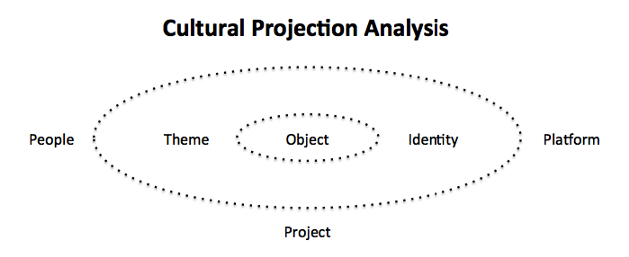
As mentioned above, there are some sense-makers for the Life-as-Activity approach. Thus, I applied the idea to develop a framework for Cultural Projection Analysis.
First, there is a social/cultural environment that contains Events. By perceiving and knowing Events, people recognize the Primary Projectivity which is offered by the social/cultural environments and initiate a Project. For the Primary Projectivity, its sense-maker is Events.
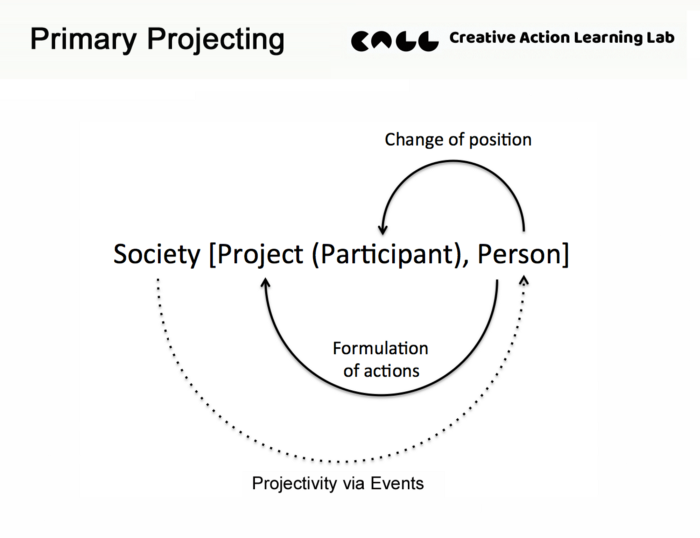
Once a project is initiated, it offers Secondary Projectivity for other people to recognize the potential action opportunities of participating in the project. For the Second Projectivity, its sense-maker is the Identity of an established Project.
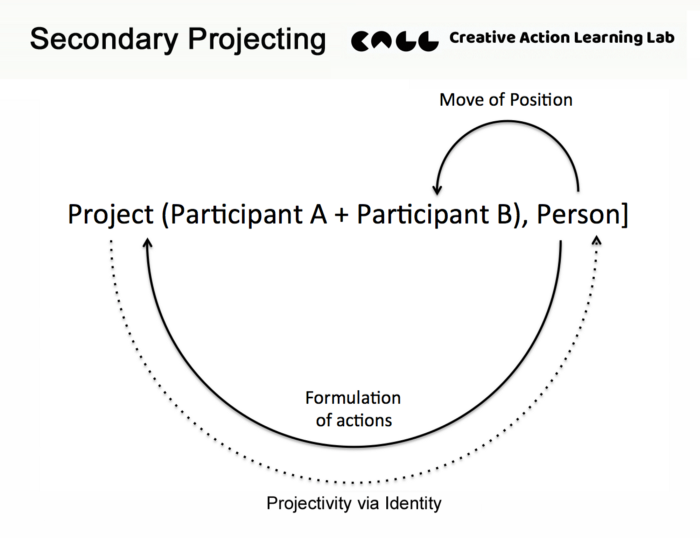
Third, the participants of a project could perceive and know the Tertiary Projectivity and initiate a new project which is inspired by the project. For Tertiary Projectivity, its sense-maker is the Themes and Identity of an established Project.
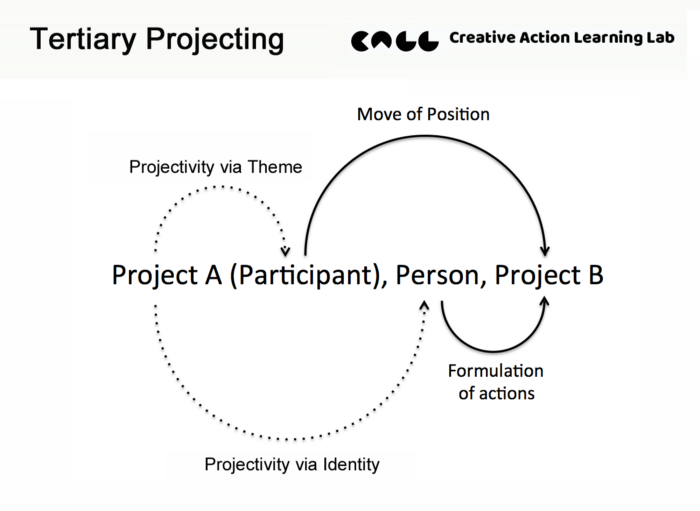
You can find more details here.
3. Life as a Chain of Projects
In Feb 2022, I applied the Project Engagement approach to understanding Life Discovery Activity.
I have developed several frameworks about Life Discovery and Life Development in general from different perspectives. One challenge is making a balance between individual perspective and collective perspective. In fact, this is an essential challenge for social sciences. For example, psychological perspective v.s. the sociological perspective, methodological individualism v.s. methodological collectivism, etc.
Some scholars don’t consider the dichotomy as a problem and they just form two camps. Other scholars developed theoretical solutions to solve the theoretical conflict between these two camps. Inspired by Derek Layder’s Social Domains Theory (1997) and Andy Blunden’s “Project as a Unit of Activity” (2010, 2014), I adopted the concept of “Project” as a Container for understanding Life.

Andy Blunden mentions a project-oriented approach is both psychology and sociology, “A project is a focus for an individual’s motivation, the indispensable vehicle for the exercise of their will and thus the key determinant of their psychology and the process which produces and reproduces the social fabric. Projects, therefore, give direct expression to the identity of the sciences of the mind and the social sciences. Projects belong to both; a project is a concept of both psychology and sociology.” (2014, p.15)
The concept of Life can be understood as Collective Life and Individual Life. We can use the concept of Project to understand both of them. A person’s real life is a set of real actions. The concept of Project is a way of curating these actions. On the other hand, Collective Life can be curated with Projects too.
4. History as a Chain of Events
On April 14, 2022, I sent an email to a theoretical sociologist after I received a recommendation from Academia. We had an email conversion in the following ten days.
I started re-reading his books, papers, and articles. He developed a meta-theory of theoretical sociology and wrote three books and many academic papers in over 10 years. We exchanged ideas on a mobile message app and shared files through emails.
He encourages me to explore the pair of concepts of “Event — Project” further. I also learned “a mechanism of unfolding” from his meta-theory of theoretical sociology. He doesn’t use the term “a mechanism of unfolding” in his book, but he uses the pair of concepts of “synchronic — diachronic” which is adopted from Ferdinand de Saussure to describe the transformation from micro-immediate situated activities to macro-social structures.
Following his approach, I used “synchronic mapping” to describe the immediate “Event — Project” match. I also used “diachronic unfolding” to describe the development of a chain of Projects and a chain of Events.
While Life is the outcome of the diachronic unfolding of the chain of projects, history is the outcome of the diachronic unfolding of the chain of events.
5. Concepts as Themes of Practice
One notion of Andy Blunden’s project-oriented theoretical approach is "Activity as Formation of Concepts".
In 2019, I developed the idea of “Themes of Practice” in order to discuss the “meaning” of the meaningful whole for my book Curativity: The Ecological Approach to Curatorial Practice. I realized the notion of “Theme” is a great tool for curating experiences and actions.
After reviewing the concept of “theme” in various disciplines such as Cultural Anthropology, Counseling Psychology, Cognitive Psychology, and the Philosophy of Science, I developed a new concept “Themes of Practice” to propose a process view of “Theme”.

Anthropologist Morris Opler (1945) developed a theoretical “themes” for studying culture. Career counseling therapists and psychologists also developed a theoretical concept called “life theme.” If we put culture themes and life themes together, we see a “great debate” of social science: “individual — collective.” The above diagram visualizes the “concept network” or “idea ecology” of “Themes of Practice”.
I consider the notion of “Themes of Practice” as a “process” type of concept, not a “substance” type of concept. Thus, it is not a new category of themes, but a transformational process between individual life themes and collective culture themes. It refers to both concept and action. It connects mind and practice. It indicates the transformation of both person and society.
After reading Blunden’s book Concepts: A Critical Approach which presents a “Hegel-Marx-Vygotsky” account of “Concept”, I realized this is an essential theoretical resource that can support my idea of “Themes of Practice”. According to Blunden, “Dualism has been around for a long time, and not only in the form of mind/matter dualism. One of the most persistent and debilitating forms of dualism today is the dualism of the individual and society, supported by sciences devoted exclusively to one or the other domain. Since concepts are units both of cultural formations and individuals minds, a theory of concepts confronts this head-on…The development of the human sciences along two parallel paths, one concerned with human consciousness, the other concerned with social and political phenomena, can only serve to place barriers in front of people’s efforts to intervene in the affairs determining their own life. By understanding concepts as units of both consciousness and the social formation, I aim to create a counter to this disempowering dogma.” (2012, p.9)
Blunden’s argument on Concept echoes my consideration of the concept of Theme. Since Theme is a particular concept, I can adopt Blunden’s proposal — the “Hegel-Marx-Vygotsky” account of “Concept” — as a theoretical foundation to support the concept of “Themes of Practice”. Furthermore, I can also adopt the Project-oriented Activity Theory to upgrade the General Curation Framework to Cultural Curation Framework.
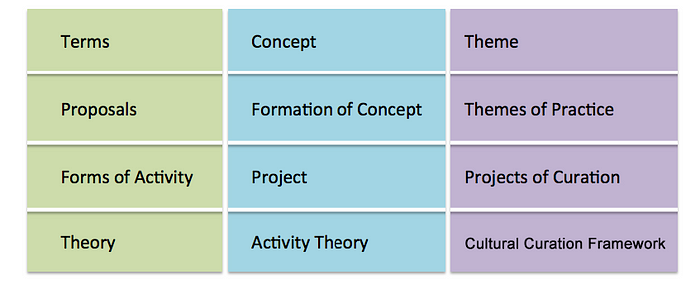
Each curation program can be considered a Project. Each “Theme of Practice” of a curation program can be considered as a Concept of a Project. Thus, the whole process of a curation program can be considered as “Initialization”, “Objectification” and “Institutionalization” of a “Theme of Practice”.
Now we can use the notion of "Themes of Practice" to discuss the transformation between Life Themes and Cultural Themes and connect Life and History.
6. Activity as Project Engagement
The term “Engagement” is inspired by Nelson Zagalo’s 2020 book Engagement Design: Designing for Interaction Motivations. While many researchers focus on “User Experience”, Zagalo moves from “Experience” to “Engagement” because “Experience” is too subjective. He proposes a triadic approach to engagement design as a direct answer to the triadic experience — context, subjects, and artifacts — and triadic interaction — know, do and feel — made of three non-hierarchical streams. (Note 1)
What I learned from Zagalo is that experience is too subjective. Activity Theorists reject phenomenology and existentialism which are great theoretical approaches for research user experience. Though Activity Theorists also talk about design and experience, it seems the term “Engagement” is better than “Experience” for Activity Theorists. (Note 2)
According to Blunden, “What distinguishes Activity Theory from Phenomenology and Existentialism is that for Activity Theory, the project has its origin and existence in the societal world in which the person finds themself; for Phenomenology and Existentialism, the psyche projects itself onto the world. For Activity Theory, commitment to a project and formulation of actions towards it is mediated by the psyche, but a project is found and realized as something existing in the world, be that an entire civilization, a single personality, or anything in between. (See MacIntyre, 1981, p.146)” (2014, p.7).
Thus, I use “Project Engagement” as the name of this project in order to highlight the fundamental theoretical aspect of Activity Theory: it is both subjective and objective, also both individual and collective. At least, this is the theoretical commitment of Project-oriented Activity Theory.
Moreover, “Project Engagement” is not only a method for research. In fact, “Engage with Projects” is the essential action of Life Discovery Activity from the Project-centered approach.
7. The Life-History Topology
The above "Life, History, and Multiverse" diagram also led to a new notion called "Life - History Topology" which is inspired by the German-American psychologist Kurt Lewin, who was known as one of the modern pioneers of social, organizational, and applied psychology in the United States.
Kurt Lewin designed a series of diagrams for his topological psychology. I consider his diagrams as a great example of a Diagram System which means a set of diagrams share the same visual identity and the same conceptual ideas.

The above diagram visualizes an example of the vocational goal of a sixteen-year-old boy (P) is to become a physician from the perspective of topological psychology. According to Lewin, “The ‘path’ to this goal (G) leads through definite stages: college-entrance examinations (ce), college (c), medical school (m), internship (i), establishing a practice (pr). The boy may have a fairly clear idea of college. Medical school and the following stages may constitute a more or less undifferentiated region ‘beyond’ which lies the goal of being a physician. Of this the boy may have a false but nevertheless a clear picture.” (1936, p.64)
While Lewin’s theory is about individual psychology, Fritz Heider works on social psychology. The success of Lewin’s psychology in representing action inspired Heider to search for his own method of visualization. Heider points out that in order to make progress in science, one has to find some way of fashioning a systematic representation of the material with which one is trying to deal. However, he realized that topology doesn’t match his account, “I soon saw that topology, as it had been developed by Lewin, did not help much with the description of processes going on between persons: there we often have to deal not with just one life space but with the relations and interactions between two or more life spaces. Frequently it is important to describe what one person thinks about another person’s beliefs, hopes, and fears, or even to describe the effect of A’s thoughts about what B thinks about C’s wishes. I once described my difficulties with topology to Lewin; but he could not solve my problems; so I discarded topology.” (1983, p.144)
The above "Life, History, and Multiverse" diagram reminded me of Lewin's concept of "Life Space" which is an individual psychological concept. What I want to explore is "Thematic Spaces" which represent the space of Themes of Practice and the space of Project Engagement.
Though "Life Space" and "Thematic Spaces" belong to different fields, I can learn the method of using topology for theoretical development from Lewin.
8. Engagement as Moving between Thematic Spaces
On July 2, 2022, I reflected on my journey of developing the Life-as-Project approach from Jan to June 2022 and wrote an article titled Life Discovery: Biography, Journey, Program (and a possible book, Part 2).
Life Discovery is a particular type of Knowledge Discovery and the primary theme of Life Discovery is “My Life”. The objective of the Life Discovery Activity is to Develop Tacit Knowledge about “My Life” and turn Tacit Knowledge into resources for actions.

By connecting the Project-centered Approach and the concept of “Thematic Space” together, we can find the following connection:
Life = Project = Thematic Space
While Life is a chain of projects, it can be understood as a journey of moving between various thematic spaces.
Each project has its primary themes and other secondary themes. By joining projects and leaving projects, we are practicing our significant Life Themes. Thus, these projects are Thematic Spaces too.
In Thematic Space: Place as Container, I mentioned that Story and Model are two types of containers. If we put them together, then one is Abstract Container and the other one is Concrete Container. A project is an Abstract Container and their environments such as digital platforms are Concrete Containers.
Now we can use my journey of developing the Life-as-Project approach as an example of the notion of “moving between thematic spaces”. In Life Discovery: Biography, Journey, Program (and a possible book, Part 3), I list the following ten themes for the six-month journey.
- 1 — LAA — The “Life as Activity” Project
- 2 — PEA — The “Project Engagement” Approach
- 3 — LAP — The “Life as Project” approach
- 4 — LDA — The “Life Discovery Activity” Project
- 5 — AAS — The “Anticipatory Activity System” Framework
- 6 — SIA — The “Significant Insights Analysis” Project
- 7 — BIO — The Biography
- 8 — MNB — The Board @ Milanote
- 9 — SSL — The Shaper & Supporter Lab (SSL) Program
- 10 — CPN — The Complexity of “Project Network”
By using the model of “Project Network”, I designed the following diagram to visualize the complexity of the about ten themes.

The model of “Project Network” is a multiple-level network that considers 1) a network of Themes, 2) a network of Projects, and 3) a network of People.
- All theoretical approaches and frameworks belong to the network of themes.
- All real activities such as developing a toolkit, designing a canvas, and hosting a program, are part of a network of projects.
- All things about people’s biogeography are located in the network of People.
The diagram is a map of the archive of my six-month journey in developing the Life-as-Project approach.
All theoretical approaches and frameworks belong to the network of themes. Each Theme refers to a Thematic Space.
And the network of Projects is considered as “Practices” of “Themes” from the perspective of the “Themes of Practice” framework and the perspective of Project-oriented Activity Theory. For example, the “MNB” (the AAS Board @ Milanote) is guided by the “AAS” framework. The “LDA” (the Life Discovery Activity) is guided by the “LAP” (the Life-as-Project approach).
We have to notice that the development of themes and the development of projects are intertwined in such a way that they actually all rely on each other. For example, the AAS framework was tested by watching the development of the SSL program. Some sub-frameworks are inspired by the SSL program. The MNB program was guided by a sub-framework of the AAS framework.
On June 30, 2022, I designed the Life Discovery Board (public, v2). The major difference between v1 and v2 is the Complexity of “Project Network”. In fact, the notion of “Complexity of Project Network” (CPN) was born on June 30, 2022, when I was designing the v2 board.
Moving between various thematic spaces will impact moving between various projects and vice versa.
Finally, we see a simple model of the development of life and history:
Life = Projects = Thematic Spaces = Events = History
In this way, the Life-as-Project approach echoes Andy Blunden’s notion of “a project is a concept of both psychology and sociology” (2014,p.15). The notion of "Engagement" has a new meaning which refers to moving between Thematic Spaces.
